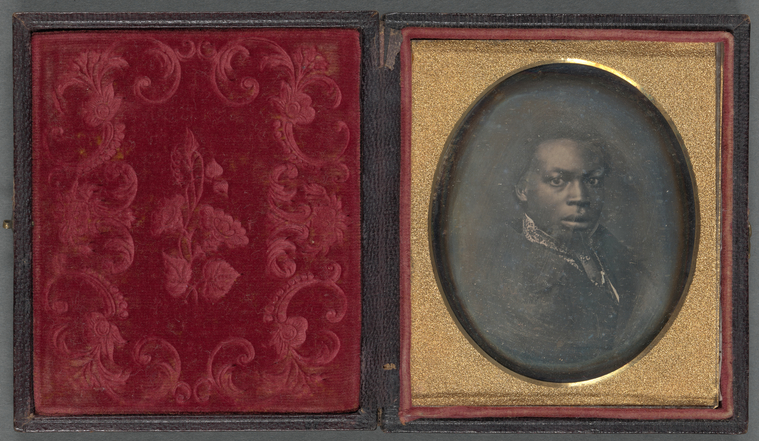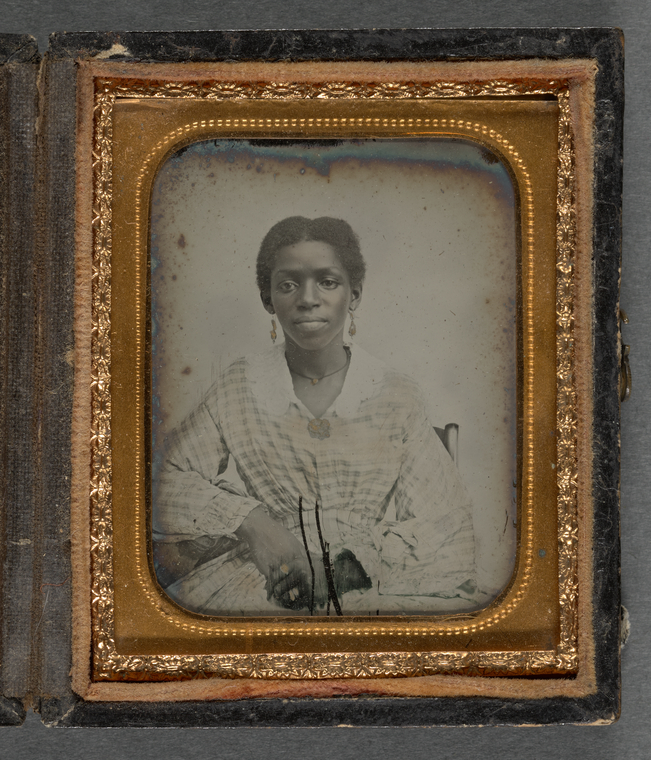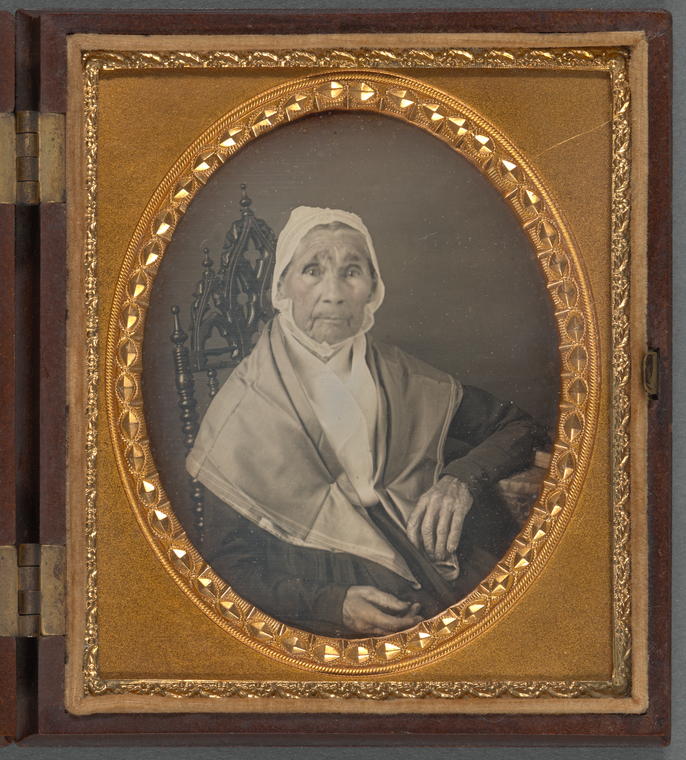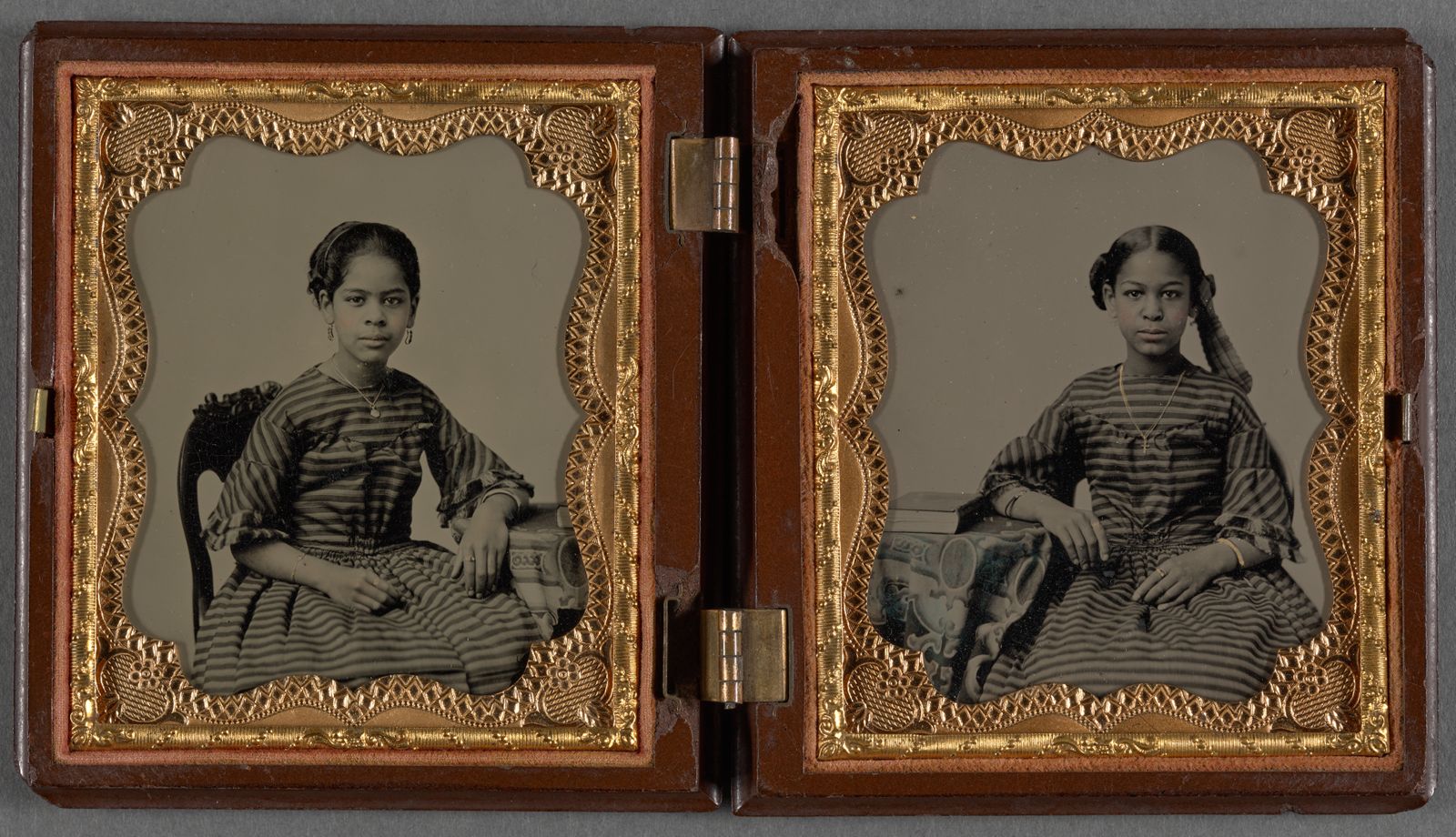




In this display, the Schomburg Center shares images of the oldest photographs in its collection, created between 1840 and 1870. Invented in 1839, the first photographic technology to gain popularity in the United States was the daguerreotype. Soon after, the ambrotype was introduced in 1851. Finally, by the Civil War (1861–65), a third technology called tintypes became available. As the technology improved, photography became increasingly affordable and widely available.
The very existence of these photographs is evidence of Black love and community care. Each of these photographic types was carefully placed in protective cases lined with velvet or silk. These cases functioned like tender keepsakes that would have been gifted, caressed, and lovingly gazed upon. While the names and identities of many of the people pictured in these portraits are lost, we know that they were beloved.
Photography created space for Black self-representation and offered a way to visualize Black humanity at a time when most African Americans were legally held as property. Many free and enslaved Blacks could afford to buy portraits of themselves. As renowned anti-slavery activist Frederick Douglass wrote, “The humbled servant girl whose income is but a few shillings per week may now possess a more perfect likeness of herself than noble ladies and court royalty.” Seated in front of the camera, Black people seized the opportunity—however brief—to assert selfhood and own their own image.
Artist Bios
-
Various Artists
-
Dante Clark (accompanying poetry)
Dante Clark is a writer from the Bronx, NY. A two-time Pushcart nominee, his work has been featured in wildness, Brooklyn Poets’ Poet of the Week, Hooligan Mag, and elsewhere. Clark graduated from Hunter College with a BA in creative writing and he has the student loan debt to prove it. He’s performed his poetry at venues like the Nuyorican Poets Cafe, the Bowery Poetry Club, and the Montauk Club. Clark also received support from organizations including Catapult, Cave Canem, and In Surreal Life where he served as a co-fellow for the 2021 sessions. He’s also a Goldwater Fellow at NYU where he’ll begin his MFA candidacy as of Fall 2023. Ultimately, Dante just wants to create in a world where all his homies can prosper.
Organizations
-

The Schomburg Center for Research in Black Culture
The Schomburg Center for Research in Black Culture in Harlem, one of The New York Public Library’s renowned research libraries, is a world-leading cultural institution devoted to the research, preservation, and exhibition of materials focused on African American, African Diaspora, and African experiences.
-

NYC Parks
NYC Parks is the steward of more than 30,000 acres of land — 14 percent of New York City — including more than 5,000 individual properties ranging from Coney Island Beach and Central Park to community gardens and Greenstreets. We operate more than 800 athletic fields and nearly 1,000 playgrounds, 1,800 basketball courts, 550 tennis courts, 65 public pools, 51 recreational facilities, 15 nature centers, 14 golf courses, and 14 miles of beaches. We care for 1,200 monuments and 23 historic house museums. We look after 600,000 street trees, and two million more in parks. We are New York City’s principal providers of recreational and athletic facilities and programs. We are home to free concerts, world-class sports events, and cultural festivals.
Beloved: African-American Portraits from the Dawn of Photography
Featuring: Various Artists Dante Clark (accompanying poetry)
Curated by: Dalila Scruggs
Locations
View Location Details St. Nicholas Park – 132nd Street and 139th StreetSt. Nicholas Park – 132nd Street and 139th Street and St. Nicholas Ave,
New York,
NY 10030
Location open 24 hours

